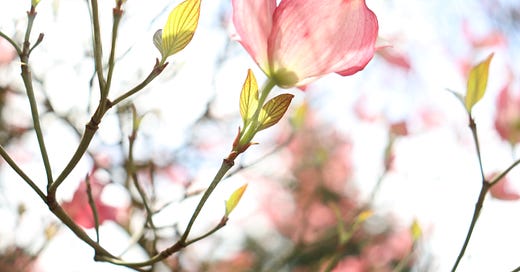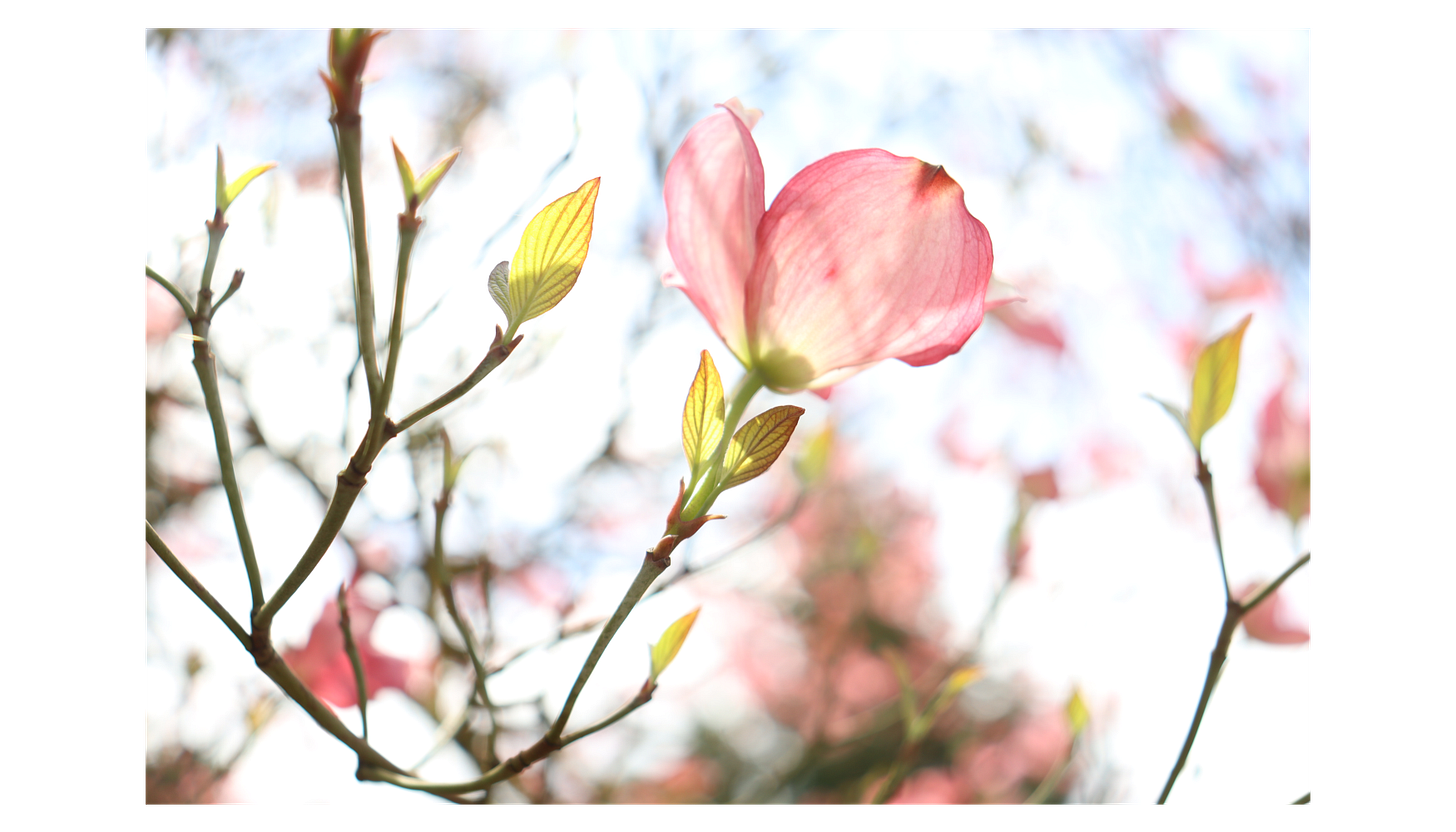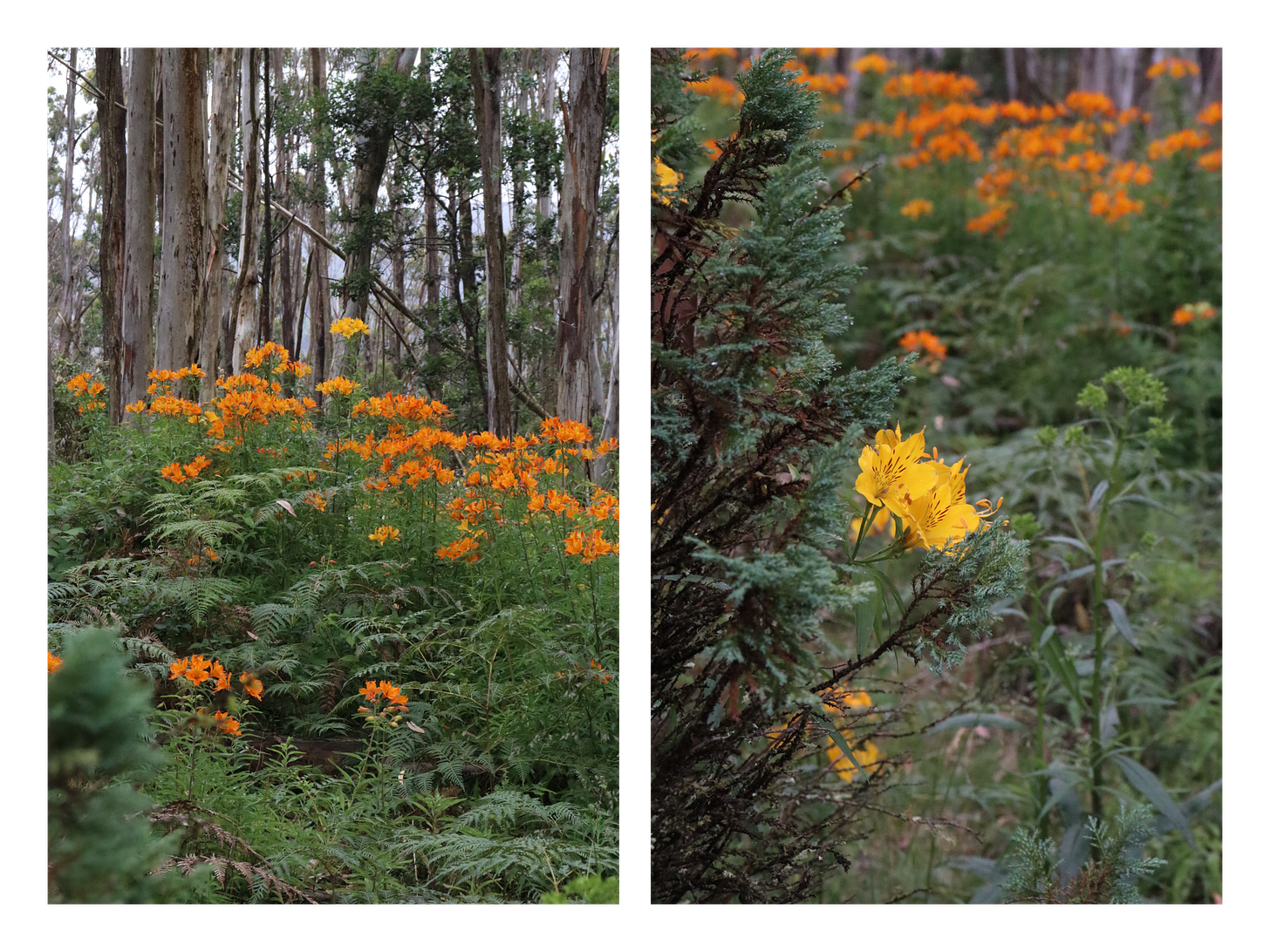Another week, another love letter — because, well, there are so many things I'm finding joy in at the moment. It's Spring here in Australia so I think that's fitting. It's a time for new interests, new appreciations. But also, renewed appreciations. A time to remember the things that bring us joy.
This love letter will be lighter on the words than my previous one, but fuller on the visuals. Anyone who gets excited by the sheer sight of a flower will appreciate this. A bloom erupting into our vision is among the best chances we have to pause the thoughts, hold off on the words, and fully inhabit the senses.
Be it an arum lily unfurling proudly in the garden bed, or tiny wildflowers speckled amongst blades of grass, flowers rouse the spirit because, in the space of a single moment, they seem to justify the world, and our part in it. There is nothing quite like beauty to engender amor fati.
Beauty, of course, can be found in all manner of places and moments. But there is something superlative about the beauty of flowers. As though each bloom is a moment of total achievement, the world maxing out its capacity for greatness. Nature reaching a peak.
And for every peak, a decline.
The utter fragility of the flower is integral to its beauty. The brevity, and fierceness, with which it flourishes in some random corner of the world, before dropping flat or flopping to the ground.
Last week I wrote about what gluten (and working with bread and pastry) has taught me about the proper nature of strength. It seems obvious to me that anything which has the capacity for great strength has equal capacity for weakness, collapse, vulnerability — precisely because it is alive.
In a similar vein, beauty, such as that we see in flowers, must also be something capable of ruin — something vulnerable, and utterly transient. Something which achieves so much precisely because it is destined, eventually, to fall.
The flower’s beauty is also contagious. It is generative. It inspires action and interaction. Why else is a bouquet so often the first choice for gifts, and celebrations? Not only because we deem flowers valuable, but because we feel we must share them. Their beauty is too much for a single soul to handle. Its energy must be transferred — gifted, displayed, painted, photographed, dried and preserved, pressed — any action that accommodates mutual or collective admiration.
I do think, in a past life, I may have been a florist. Flowers just give me so much joy. Deep joy. On their own and in combination. And for all that they suggest and embody. When Spring rolls around, my spirits run high. They verge on elation.
Perhaps this is not so unique? Are we not all anthophiles? How could freshly-sprung daffodils on the fence-line, or a radiant white magnolia against the crisp blue, not rouse admiration? When the living world is not so distanced, not so obstructed from view, it’s difficult not to get the buzz of spring. The seasons speak to us, and heeding their call is integral to our own bodily and spiritual equilibrium.
Spring and Autumn are my favourite months to walk. They’re those liminal seasons between the extremes of heat and cold. Life shines in liminal spaces; it starts to fade at extremes.
Taking my sleep-regressing baby for walks, in the fresh air of early-to-mid Spring with everything budding and blooming and glowing with promise, has provided me with a singular joy these past weeks. The best walks are those from which I return bearing blooms — some chance combination of neighbourhood foragings, whatever spoke to me, whatever lured me in.
We have a part to play, too, in the achievements of flowers. We give them new life and beauty when we gather them together, in combinations never twice the same, and position them thoughtfully in the centres or corners of our homes. And how those centres shine; how those corners become centres, with just a vase and some stems.
Flowers might also be so resonant because they reflect to us our own potential and our own cycles, intimately linked as they are to the rhythms of the flora and fauna that surround us. Like flowers, we have a time to unfurl, open ourselves to the world, widen our perception of what is possible and of what we might be able to achieve in this lifetime. This may not always correlate with a literal Spring, but these are the times in our lives when learning and novelty come easily because we have the appetite for them. We have the energy to explore newness — in our worlds, and in ourselves.
I have been in an extended personal ‘spring’ this year, spanning from the birth of my first baby back in early Autumn, all throughout Winter, and to the middle of Spring where I find myself, now, called to write about the things that are giving me joy and engendering one of the deepest and fullest states of openness I can remember to date. The last self-blooming of such magnitude, I presume, was that which I underwent as a young girl — one I can barely remember but know is inherent to childhood.
I see this now in my daughter who, for the last seven months, has been ever-expanding, ever-pushing at the limits of what her body allows her to do, and what her senses allow her to perceive. Let alone what she is able to express.
For me, this period of child-like openness and expansion has meant deep and rapid growth — set in motion, quite naturally, by the dawn of motherhood. The birthing of a child is also the birthing of a mother. But beyond the direct lessons and readjustments of matrescence, my spring has also meant new skills, and new appetites.
Earlier this year, not long after our baby came into the world, I picked up knitting needles for the first time in my life. Around the same time, I also started working with sourdough and pastry. I cannot tell you how many failures and frustrations I experienced in the first month or so of learning. How many loaves came out of the oven flat as pancakes, with totally grotesque crumb structures. How utterly awkward those knitting needles felt in my hands for the first few weeks. But also, how fresh and capable I felt in mustering another attempt; how completely persistent and committed I was to the process and how patient I was to see results.
The energy of Spring is the energy to persevere in openness; to resist those forces that might trigger or tempt retraction and surrender.
Springs don’t last forever, seasonal or personal. Soon the petals peel away, and the green branches fade to brown-gray, the flower’s potential contracts back into its mother plant, and holds itself tight as a bud through the winter months. We, too, have necessary periods of contraction, of retreat from potential. Persephone, Greek goddess of Spring, incarnates such duality.
But if you, like me, are currently immersed in an inward or outward spring (or both), then I hope you enjoy every last delicious moment of it.
Afterthoughts
Regarding the duality of expansion and contraction, I’d like to share a favourite poem of mine, by lyric goddess Sylvia Plath. Personally, I have felt kin to both sisters, at different stages of life, which I think is only natural.
Two Sisters of Persephone
Two girls there are : within the house
One sits; the other, without.
Daylong a duet of shade and light
Plays between these.
In her dark wainscoted room
The first works problems on
A mathematical machine.
Dry ticks mark time
As she calculates each sum.
At this barren enterprise
Rat-shrewd go her squint eyes,
Root-pale her meager frame.
Bronzed as earth, the second lies,
Hearing ticks blown gold
Like pollen on bright air. Lulled
Near a bed of poppies,
She sees how their red silk flare
Of petaled blood
Burns open to the sun's blade.
On that green alter
Freely become sun's bride, the latter
Grows quick with seed.
Grass-couched in her labor's pride,
She bears a king. Turned bitter
And sallow as any lemon,
The other, wry virgin to the last,
Goes graveward with flesh laid waste,
Worm-husbanded, yet no woman.
— Sylvia Plath (1957)

















"...how these corners become centers..." Beautiful. Penelope, I have a feeling you might enjoy the floral photography of Jamie Beck (specifically in her lovely little coffee-table book 'The Flowers of Provence'). She composes striking still life images.
This is my first encounter with Plath's "Two Sisters of Persephone" and I'm grateful to have been introduced. What a powerful image, with the rat-shrewd worm-beheld sister feeding the earth upon which the king-bearing sister lies!
You are spot on - there is something intrinsically appealing about fresh flowers and springtime. I love how you have identified your own internal seasons and that this phase of your life has been spring-like. I feel like motherhood does often release a deep creative yearning, although on reflection I have felt like it has been more winter-like (due to time constraints) in my own experience. I know that spring will come again though.